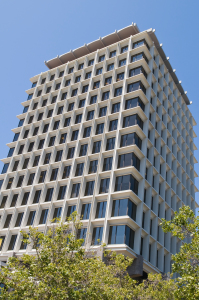Growth limits in Silicon Valley
The debate on growth limits has a long history in Silicon Valley; my own personal initiation into local tensions over development restrictions came nearly thirty years ago in the wake of a bitterly-fought slow-growth referendum over the St. Patrick’s Seminary lands in Menlo Park. Recent events in Palo Alto—an unpopular city-approved development was rejected by referendum, and a slate of slow-growth candidates were elected to City Council—have lately further heated the discussion, as that city continues to weigh a proposed cap on office development.
Slow growth
The city of Palo Alto has seen about 540,000 square feet of office space built between 2008 and 2015, or roughly 67,000 square feet per year, according to a city staff report. During that same period, the city lost about 70,000 square feet of retail space. While this expansion is considerably less than that seen in other nearby Peninsula communities (e.g., Sunnyvale, Mountain View), in the absence of significant investment in parking and transportation infrastructure, the result has been extended commute times and an increase in residential street parking in neighborhoods located near office buildings.
“We want this environment to remain a beautiful place,” says longtime Palo Alto resident Cheryl Lilienstein, a member of the community group Palo Altans for Sensible Zoning. “As big buildings go up, the beauty is obliterated. One reason we were drawn here is it was beautiful.” Two slow-growth candidates recently elected to Palo Alto City Council were supported by this organization.
Anti slow-growth
Not everyone shares this slow-growth philosophy, however. Growth advocates and local Chamber of Commerce and business leaders oppose the office space cap currently under discussion. In the view of Lorin Alusic, director of corporate affairs for Hewlett Packard in the western region, “a limit of this magnitude would effectively eliminate Palo Alto as a headquarters location should additional office or R&D space be a necessity.” The argument of growth advocates is that a cap would only delay development, not prevent it. A cap would not necessarily eliminate traffic problems, either, as employers could simply squeeze more people into smaller spaces; over time, assuming demand remains high, roughly the same amount of development would occur, but with more negative impacts. What is needed, believe many growth advocates, is better planning.
Traffic problem manages high concentration
“Honestly, the traffic problem is best managed by a policy of highly concentrated employment centers that are near housing that are balanced—so if you do drive you don’t drive so far—and that are concentrated enough to be well served by fixed rail and bus service,” says Gary Pivo, a professor at the University of Arizona who has authored papers on growth-control measures. Such planning, however, especially in areas like Silicon Valley and the San Francisco Bay Area, would require cooperation and coordination among the various local government and agencies charged with implementing and regulating such programs, policies and services.
In view of the high economic stakes involved, including the potential impact of such restrictions on rents, retail business and even residential property values, these proposed restrictions have generated a plethora of opinions, discussion, and forecasting. A number of growth control measures have been adopted by the cities of Mountain View, Sunnyvale, San Francisco, and Walnut Creek, among others, with varying degrees of success. Given the passion surrounding the ongoing debate in Palo Alto, these issues promise to make for a very interesting summer there.
